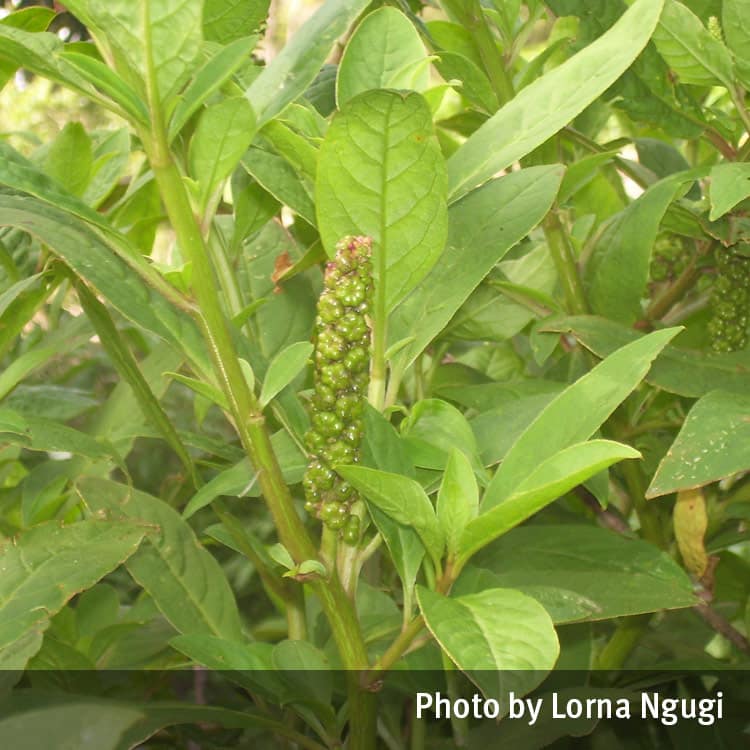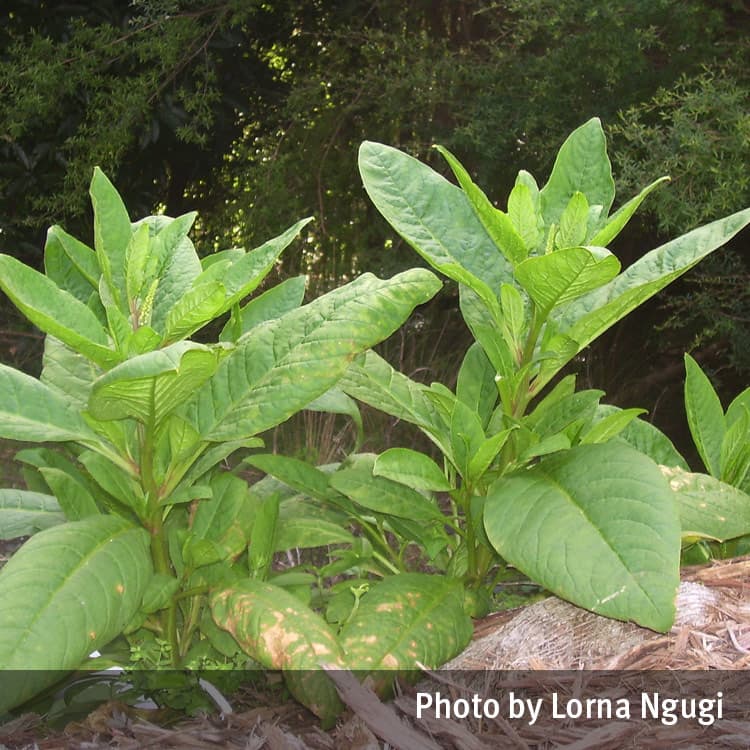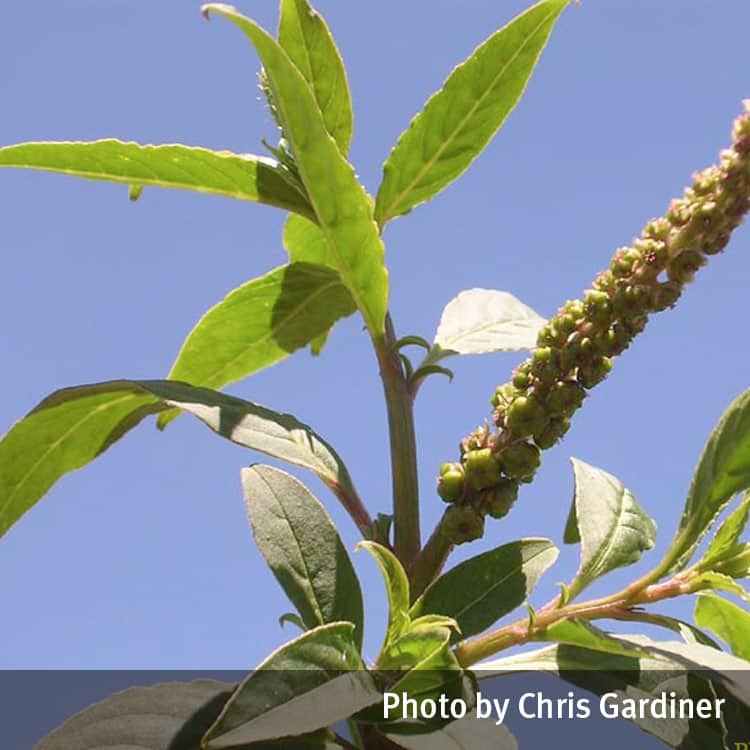Warning
Seek medical attention if exposure causes symptoms.
Description
Perennial herb or small shrub with smooth succulent stems growing to 2m. Often found as a weed of waste places, creek banks and roadsides.
Flowers are white to pale green becoming purplish, held in dense axillary racemes or spikes 7-15cm long.
The soft leaves are elliptic to ovate, tapered into the petiole, 5-25cm long and 1-8cm wide, with entire margins.
Toxicity
Symptoms
All parts of the plant are poisonous. Symptoms from ingestion may include headache, burning in the mouth, abdominal cramping, vomiting and diarrhoea. The acrid sap can cause skin irritation.
Images



Details
Common name: Inkweed
Botanical name: Phytolacca octandra
Other common names: Red-ink plant, dyeberry
Family: Phytolaccaceae
General description: Perennial herb or small shrub with smooth succulent stems growing to 2m. Often found as a weed of waste places, creek banks and roadsides.
Flowers: Flowers are white to pale green becoming purplish, held in dense axillary racemes or spikes 7-15cm long.
Leaves: The soft leaves are elliptic to ovate, tapered into the petiole, 5-25cm long and 1-8cm wide, with entire margins.
Fruit/Berries: Fruits are succulent flattened globose berries, purplish black when ripe with 7 to 8 segments, about 8mm in diameter and held in compact clusters along a spike (raceme). The berry contains about 6-8 hard shiny seeds.
Other: Copious red juice exuded from berries.